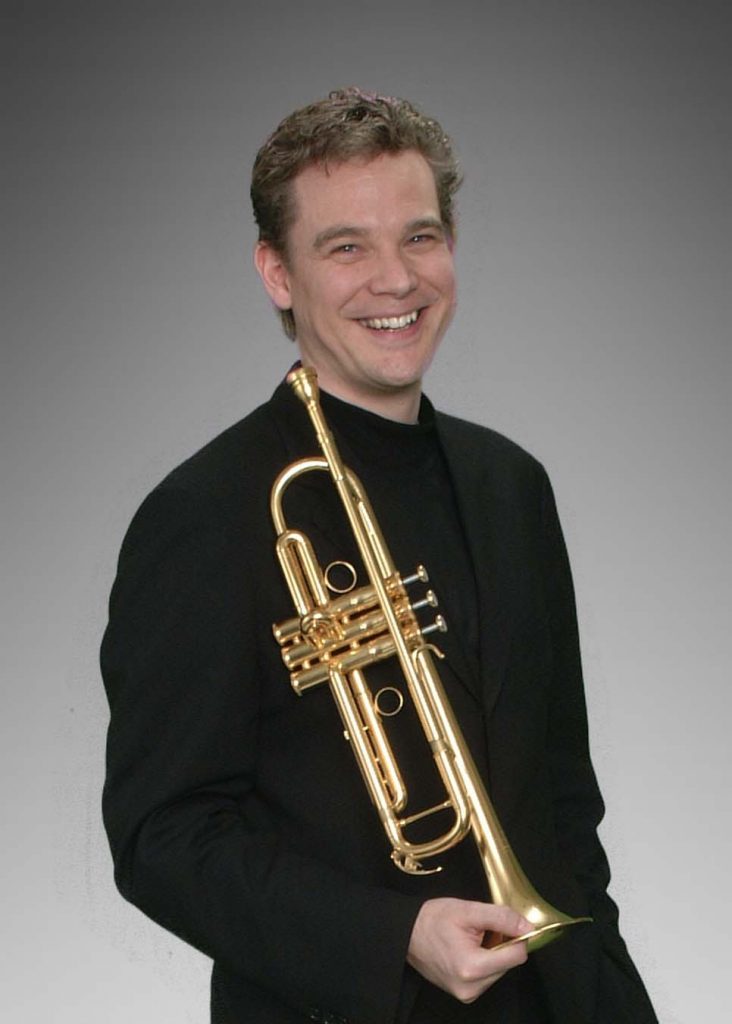From Adams to Prokofiev, van Zweden and DSO deliver the light and dark

Ryan Anthony performed Haydn’s Trumpet Concerto with the Dallas Symphony Orchestra Thursday night.
Haydn’s Trumpet Concerto in E-flat, one of the brightest miniature masterpieces in the symphonic repertoire, provided the high point of a consistently well-played, always fascinating concert by the Dallas Symphony and music director Jaap van Zweden at Meyerson Symphony Center.
Soloist Ryan Anthony, the orchestra’s principal trumpet, presented an outstanding performance by any standards. The first movement, a cheerful showpiece, provide ample opportunity for Anthony to show off flawless technique and flexibility, with a boldly attractive tone transitioning smoothly across the wide range the work demands. The middle movement, a stately Andante cast in the mold of the bel canto arias of the era, placed that same assertive tone in a more reflective setting against a serene orchestral backdrop. The third and final, with a broader emotional range comparable to the composer’s greatest symphonic movements, placed van Zweden, Anthony, and the orchestra in the glowing light of one of Haydn’s most optimistic scores.
American composer John Adams’ Lollapalooza of 1995 opened the concert in a downright celebratory mood. A leading advocate and practitioner of musical minimalism, Adams here decorates the inherent repetitiveness of minimalism with lavishly colorful orchestration and infectious, dance-like rhythms, creating an appealing, albeit structurally unambitious work.
After the Haydn concerto and intermission, the full orchestra returned for excerpts from the score Prokofiev created in the late 1930s for a full-length ballet version of Romeo and Juliet. The composer created three separate suites with a total of twenty short movements from the ballet for concert performance; van Zweden selected and arranged eleven of those movements to form a sort of extended tone poem for this concert.
Prokofiev’s music elaborates and expounds movingly on Shakespeare’s drama, from the contrast of light and dark in the opening moments—always stunning no matter how many times one may have heard it—to the sweeping but sturdy lyricism of the love scenes. Van Zweden reveled in the myriad moods and colors, and the orchestra maneuvered through this forty-minute set brilliantly; the penultimate movement in this version, “Romeo at Juliet’s Grave,” created, in this performance, a maelstrom of conflicting and overlapping emotions and musical ideas.
The one weakness in van Zweden’s concept was in the final arrangement of movements, in which he placed “Tybalt’s Death” as the final movement, after “Romeo at Juliet’s Grave.” As we all know from ninth-grade English class, Tybalt dies long before the end of the play and the graveside scene; although van Zweden clearly wanted to close the evening with the noisy gestures of “Tybalt’s Death,” the graveside music would have been a more powerful, albeit desolate ending to a wide-ranging evening.
The program will be repeated 7:30 p.m. Saturday and 2:30 p.m. Sunday. mydso.com; 214-692-0203.


